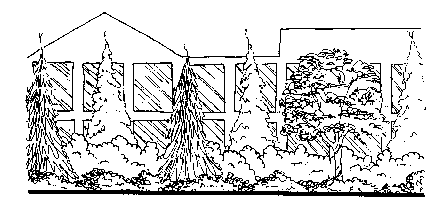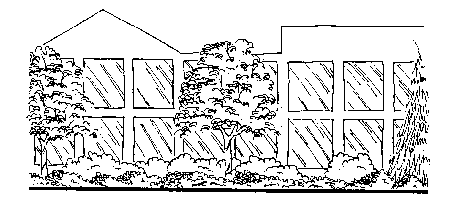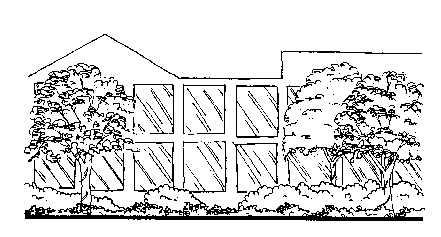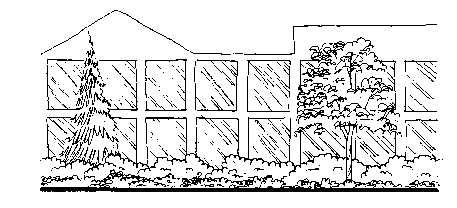12.18.040 Types of landscaping.
Types of landscaping are as follows. In cases where two types are specified for one area, the more intensive landscape type shall be required.
|
Type |
Purpose |
Tree Planting |
Shrubs/Ground Covers |
LID Elements |
Other |
|---|---|---|---|---|---|
|
I |
Type I landscaping is intended to provide a solid sight barrier to totally separate incompatible uses. Coniferous materials are selected to provide maximum year-round screening. |
A planting strip with two offset rows of coniferous trees at an average spacing of 10 feet triangulated on-center. |
Mixture of shrubs, ground covers and other plant material to provide 85 percent surface coverage within two years from planting. |
Vegetation-based LID BMPs such as bioretention facilities are permitted within all landscaping types provided the location and plant materials do not detract from the primary purpose of the landscaping type. Drought tolerant and native vegetation shall be used to the maximum extent practicable. |
Either earth berming at a minimum height of two and one-half feet or a six-foot-high sight-screening fence. |
|
II |
Type II landscaping is intended to create a semi-sight-obscuring buffer between incompatible uses and against building facades. The majority of selected plant materials shall be coniferous to provide the intended buffering year-round. |
A planting strip planted with trees, of which a maximum of 30 percent may be deciduous, at an average spacing of 20 feet on-center. |
|||
|
III |
Type III landscaping is intended to provide visual relief between incompatible uses and against building facades. A mixture of deciduous and coniferous plant material shall be provided using a minimum of coniferous material to provide visual relief on a year-round basis. |
Planting strip planted with coniferous or a maximum of 75 percent deciduous trees at an average spacing of 25 feet on-center. |
|||
|
IV |
Type IV landscaping is intended to provide visual relief within parking areas and adjacent to building facades. Deciduous tree materials are selected to provide shade and clear sight-lines within parking areas. |
At least one deciduous tree for each 150 square feet of landscaped area at an average spacing of 30 feet on-center. |
|||
|
V |
Type V landscaping is intended to provide visual relief and add to the overall quality of a development by softening the effect of the new building upon the landscape. |
At least one evergreen or deciduous tree for each 500 square feet of landscaped area. |
|||
|
VI |
Type VI landscaping is intended to revegetate, restore, or enhance existing or damaged areas of native plantings. |
A mixture of coniferous trees which shall range from one to six feet at installation. Deciduous trees shall range from “whips” to one and one- half-inch caliper at installation. |
Native wetland plants shall be preferred for wetland areas. |
Figure 12.18-1 Type I Landscaping

Figure 12.18-2 Type II Landscaping

Figure 12.18-3 Type III Landscaping

Figure 12.18-4 Type IV Landscaping

Figure 12.18-5 Type V Landscaping

(Ord. 2200 § 2 (Exh. B), 2016; Ord. 1904 § 1, 2003; Ord. 1815 § 1, 2000; Ord. 1629 § 1, 1996).